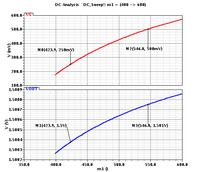yuvan
Member level 4

Hi tompham,
I think you have implemented PKT MOK's paper. And I hope the Ccf is basically used for damping the Q. And yes, this greatly reduces the Q of the loop but inturn makes the loop ultimately slow, which will not help in Capless LDO design. I did one LDO some years back, so I would suggest you to go for a faster compensating loop, which will solve this issue. You can also try to use milliken method of making it faster, with some modifications.
I think you have implemented PKT MOK's paper. And I hope the Ccf is basically used for damping the Q. And yes, this greatly reduces the Q of the loop but inturn makes the loop ultimately slow, which will not help in Capless LDO design. I did one LDO some years back, so I would suggest you to go for a faster compensating loop, which will solve this issue. You can also try to use milliken method of making it faster, with some modifications.










